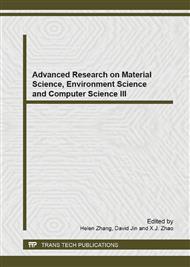[1]
Tong Li. An Approach to Modelling software Evolution Processes[M]. Tsinghua University Press, Beijing, (2008).
Google Scholar
[2]
Sutton, StanleyM., Jr. From Process Programming to Process Engineering, Springer Berlin Heidelberg, (2011).
Google Scholar
[3]
A. Finkelstein, J. Kramer and B. Nuseibeh (Eds), Software Process Modelling and Technology, John Wiley & Sons Inc., (1994).
Google Scholar
[4]
B. Curtis, M.I. Kellner and J. Over, Process Modeling, Communications of the ACM, Vol. 35, No 9, September 1992, pp.75-90.
Google Scholar
[5]
Junkermann G, Peuschel B, Schäfer W, et al. MERLIN: Supporting cooperation in software development through a knowledge-based environment[M]. Univ. -GH, FB Mathematik-Informatik, (1995).
Google Scholar
[6]
Peuschel, Wolf, Architectural support for distributed process centered software development environments, in: Proc. of the 8th Int. Software Process Workshop, IEEE Press, Dagstuhl, Germany, (1993).
Google Scholar
[7]
Kaiser, Gail E., and Peter H. Feiler. An architecture for intelligent assistance in software development., Proceedings of the 9th international conference on Software Engineering. IEEE Computer Society Press, (1987).
Google Scholar
[8]
Peuschel, Burkhard, and Wilhelm Schäfer. Concepts and implementation of a rule-based process engine., Proceedings of the 14th international conference on Software engineering. ACM, (1992).
DOI: 10.1145/143062.143126
Google Scholar
[9]
Belkhatir N, Estublier J, Melo W. THE ADELE-TEMPO experience: an environment to support process modeling and enaction[J]. Software Process Modelling and Technology, Research Studies Press/John Wiley & Sons, 1994: 187-222.
Google Scholar
[10]
Cass A G, Lerner A S, McCall E K, et al. Little-JIL/Juliette: a process definition language and interpreter[C]/Software Engineering, 2000. Proceedings of the 2000 International Conference on. IEEE, 2000: 754-757.
DOI: 10.1145/337180.337623
Google Scholar
[11]
Osterweil, Leon. Software processes are software too., Proceedings of the 9th international conference on Software Engineering. IEEE Computer Society Press, (1987).
Google Scholar
[12]
Montangero, Carlo, and Vincenzo Ambriola. Oikos: constructing process-centred SDEs., Software Process Modelling and Technology. Research Studies Press Ltd. (1994).
Google Scholar
[13]
Huff, Karen E., and Victor R. Lesser. A plan-based intelligent assistant that supports the software development., ACM SIGSOFT Software Engineering Notes. Vol. 13. No. 5. ACM, (1989).
DOI: 10.1145/64137.65012
Google Scholar
[14]
Qian Yu, Tong Li, JinZhuo Liu, Xuan Zhang, Yong Yu. Completeness Set Proof of Precondition and Post-condition Types of Activity in any EPM in: The 6th International Conference on Machine Vision, Novermber 16-17, 2013, in press.
DOI: 10.1117/12.2050039
Google Scholar
[15]
Qian Yu, Tong Li, Lin Ying, Wei Wang, Xuan Zhanga, Na Zhao. Method of Transforming EPMM-based Software Evolution Model into its Execution Model and Complete Proof of Transforming Rules in : Sensors & Transducers Journal, (2014), in press.
Google Scholar


